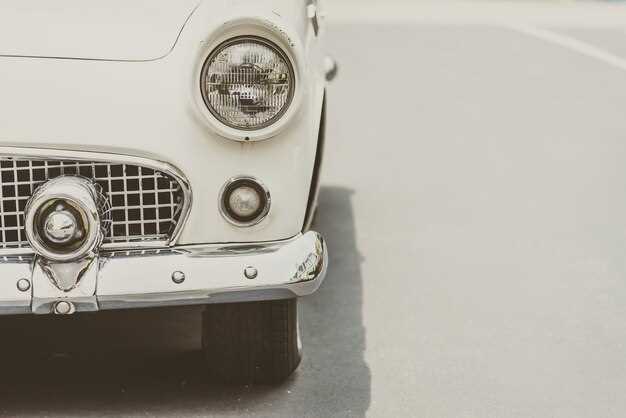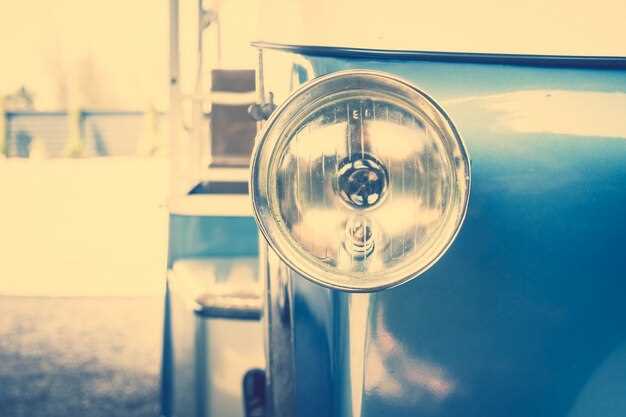
Classic car auctions present a unique opportunity for enthusiasts and collectors to acquire cherished vehicles that reflect automotive history and craftsmanship. These events attract a diverse audience, from casual bidders to seasoned collectors, all eager to secure their dream cars. However, navigating the auction process can be complex and intimidating, especially for first-time participants. Understanding the dynamics of classic car auctions is vital for anyone looking to make a successful bid.
In this comprehensive guide, we will explore the essential aspects of classic car auctions, including how they operate, what to expect on auction day, and the nuances of strategic bidding. From pre-auction research to post-auction follow-up, each step is crucial for optimizing your chances of winning a desirable vehicle without overspending. This overview aims to equip prospective bidders with the knowledge and confidence needed to participate effectively in the auction process.
Attending classic car auctions can be exhilarating, but it also requires careful preparation and an understanding of bidding strategies. Knowing how to assess a car’s value, setting a budget, and recognizing the right moments to bid are all critical elements that can dramatically impact your auction experience. Whether you’re aiming to restore a vintage gem or invest in a high-value collectible, mastering the art of bidding can make all the difference in securing the perfect classic car.
Understanding Auction Formats and Bidding Procedures
Classic car auctions generally fall into two primary formats: live auctions and online auctions. Each format has distinct features that influence how bidders engage and make decisions. Live auctions involve an in-person event where bidders raise paddles to indicate their interest in a vehicle, often accompanied by a charismatic auctioneer. This format amplifies the excitement and urgency, creating a lively atmosphere that can lead to competitive bidding. In contrast, online auctions allow for more flexibility, enabling participants to place bids from anywhere at any time within a specified timeframe.
Regardless of the auction format, understanding the rules and procedures is crucial to successful bidding. Before the auction, it is important to familiarize yourself with the auction house’s specific guidelines, including registration requirements, bidding increments, and fees. Most auction houses require bidders to register and may ask for a deposit to secure serious participation.
Bidding procedures also vary by auction type. In live auctions, bidders communicate through visible gestures, while online auctions require submitting bids through a digital interface. Some auctions utilize a “reserve price,” which is the minimum price the seller is willing to accept; if bidding does not reach this threshold, the car will not be sold. In contrast, “absolute” auctions guarantee that the highest bid will win, regardless of the final price.
Understanding these formats and procedures not only helps bidders navigate the auction but also increases the opportunity for securing a desired classic car. Observing bidding behavior, knowing when to place bids, and being mindful of your budget are essential strategies to adopt during the auction process. Notably, establishing a clear maximum bid in advance can help avoid impulsive decisions under the pressure of competitive bidding.
Overall, thorough preparation and knowledge of auction formats and procedures can significantly enhance the bidding experience and improve the chances of acquiring a classic car at a fair price.
Researching Classic Cars Before the Auction

Before attending a classic car auction, thorough research is essential to enhance your chances of making an informed and successful bid. Begin by identifying the specific make and model of the car you are interested in. Collect background information on its history, production numbers, and market value to gauge what to expect during the auction.
Utilizing reputable online resources, classic car magazines, and forums can provide valuable insights into the vehicle’s reputation among collectors and enthusiasts. Check for past auction results of similar models to understand current market trends and pricing. Websites like Hagerty or Hemmings offer valuable market analysis that can assist in your research.
Inspect the vehicle’s documentation. Request service records, titles, and registration papers in advance. This information can reveal the car’s maintenance history and any past accidents, which can significantly affect its value. If possible, arrange for a pre-auction inspection by a qualified mechanic or classic car expert to assess the vehicle’s condition, as this could uncover unseen issues.
Connect with the seller, if feasible. Engaging in direct communication can provide clarity on details that might not be publicly disclosed. Understand their motivation for selling, and ask specific questions about the car’s condition, modifications, and provenance.
Lastly, familiarize yourself with the auction process. Review the auction house’s guidelines, fees, and bidding procedures. Understanding the rules can prevent surprises on auction day and increase your confidence in making bids.
Navigating Bidding Strategies for Success

Success at classic car auctions largely hinges on understanding and implementing effective bidding strategies. The first step is to establish a clear budget that encompasses not only the purchase price but also additional costs such as buyer’s premiums, taxes, and potential restoration expenses. This budget should be strictly adhered to throughout the auction process to avoid overspending.
Before bidding begins, thorough research is essential. Identify the specific makes and models you are interested in, and gather information about their market values, historical sales, and condition reports. This knowledge provides a solid foundation for making informed bidding decisions and helps avoid emotional or impulsive bids.
Next, consider setting a bidding limit for each vehicle. This limit should be informed by your research and your established budget. When participating in live auctions, it is advisable to remain calm and composed, resisting the urge to exceed your limit under pressure. Use incremental bidding to your advantage, as well as observing the room dynamics and competitor behavior can offer insights into the bidding landscape.
A strategic approach involves bidding early when possible. Placing an initial bid can signal your interest and commitment to the auctioneer and other bidders. However, remaining aware of the competition is crucial; if several bidders seem eager, a more strategic approach might involve waiting until the auction nears its conclusion to make your move.
Utilize proxy bidding if available, which allows you to set your maximum bid online ahead of time. This method can safeguard against impulse decisions during the heat of the auction. Additionally, being aware of the auction’s pacing is important; some auctions move quickly, while others allow for more deliberation. Adapt your strategy to the auction’s rhythm to maintain a clear advantage.
Finally, if you are new to the auction process, consider consulting with a more experienced bidder or a professional advisor. Their insights can prove invaluable in navigating the complexities of bidding and ensuring that your approach aligns with successful practices. Remember, the key to triumph in classic car auctions lies in preparation, strategic planning, and disciplined execution.
